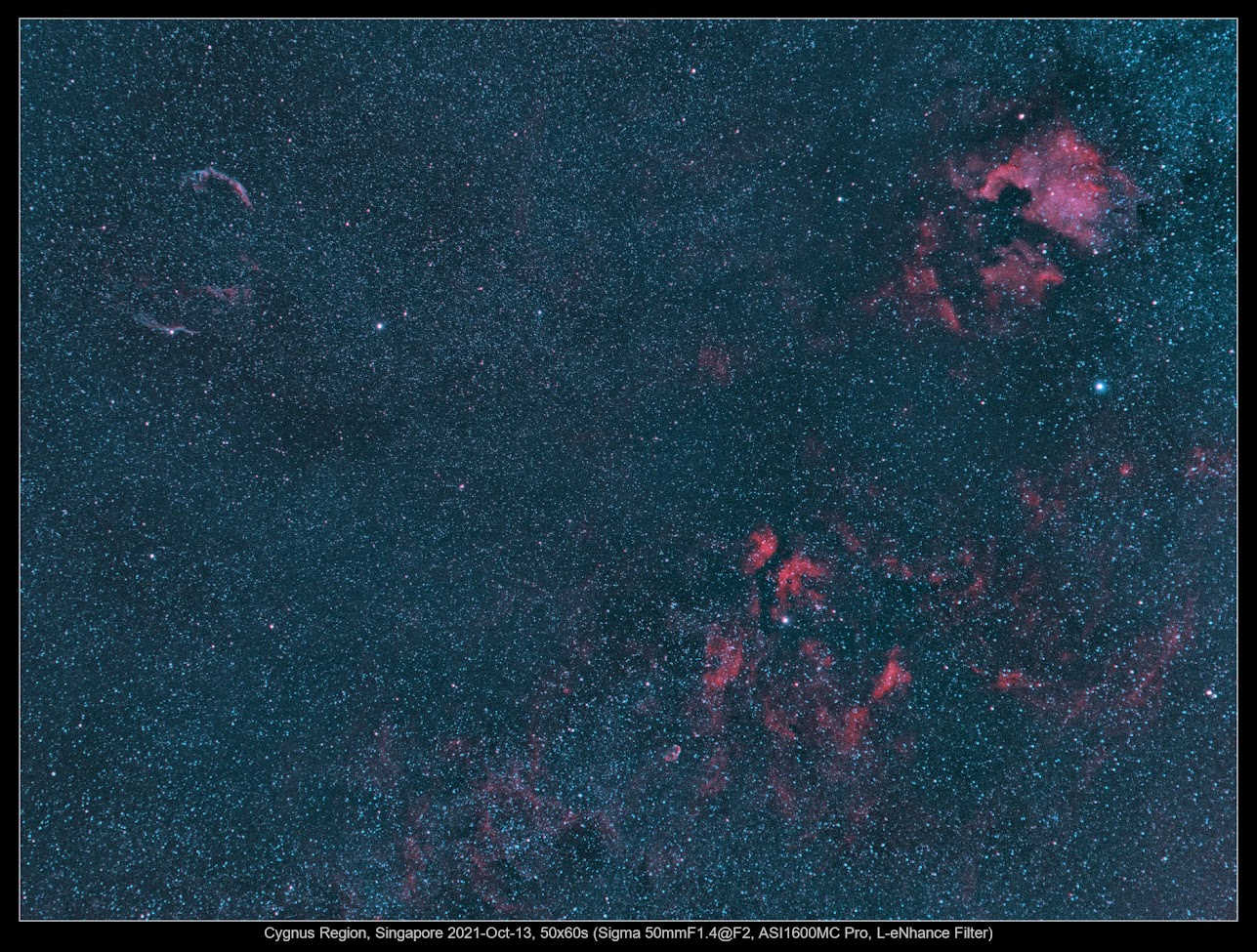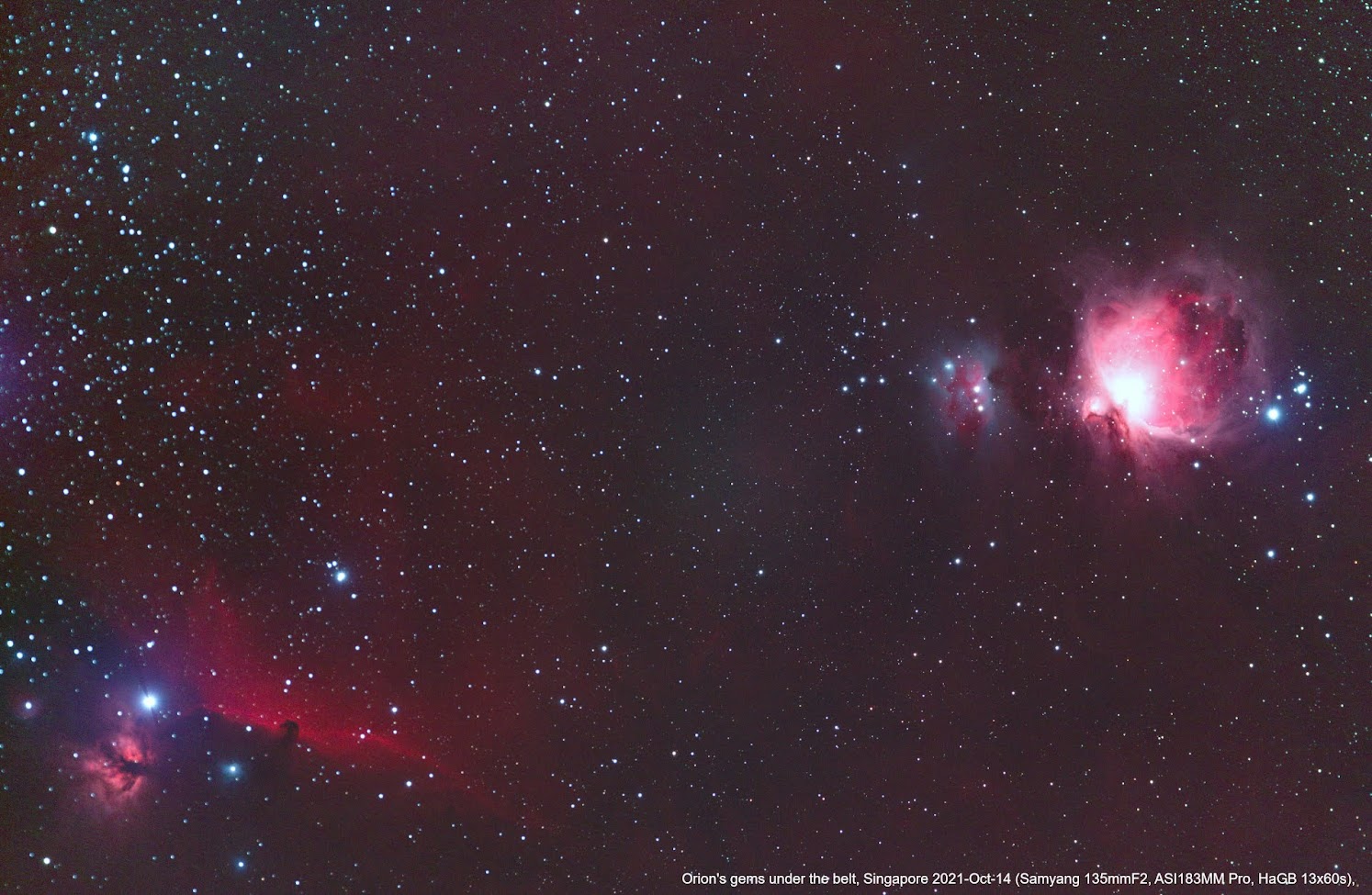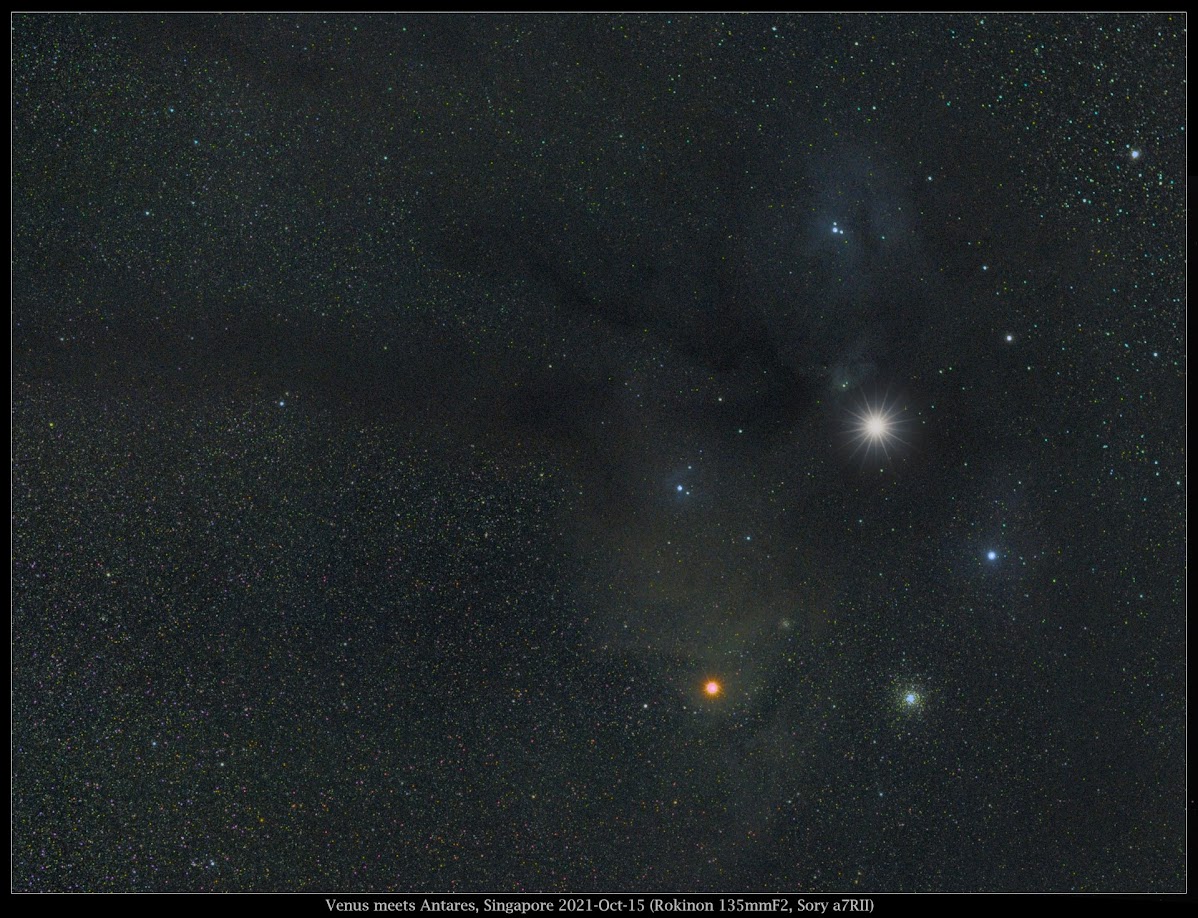My astrophotography 2021
Re: My astrophotography 2021
An annotated version of the vertical shot of MK on Oct-8 evening. A farewell to the summer night skies.

Re: My astrophotography 2021
2021-Oct-13-14
A long night under the stars. The night sky began to clear at 10PM. And I had to shoot the Cygnus region because 1) that would complete my farewell to the summer night skies, 2) I hadn't taken a wide field of this famous region before.
It turns out that under the terrible light pollution, the L-eNhance+ASI2600MC Pro produced peculiar brightness in the central of the 50mm frame -- but in the G(B) channels only. So I had to decompose into R and G images and process them separately.
The result is this.

A long night under the stars. The night sky began to clear at 10PM. And I had to shoot the Cygnus region because 1) that would complete my farewell to the summer night skies, 2) I hadn't taken a wide field of this famous region before.
It turns out that under the terrible light pollution, the L-eNhance+ASI2600MC Pro produced peculiar brightness in the central of the 50mm frame -- but in the G(B) channels only. So I had to decompose into R and G images and process them separately.
The result is this.
Last edited by hhzhang on Thu Oct 14, 2021 10:54 am, edited 1 time in total.
Re: My astrophotography 2021
Next target was M31, again! I just wanted to know if I have >1hour total exposure with a small 70mm APO and an OSC astrocam, what could I get under the Sg's light polluted sky?
Well, compared with a mere 20min total exposure the other day, the resulting image from 92min total exposure shows much more features in the outer (fainter) part of the grand galaxy. I guess this well concludes my attempt at shooting M31 from Singapore this year.

Well, compared with a mere 20min total exposure the other day, the resulting image from 92min total exposure shows much more features in the outer (fainter) part of the grand galaxy. I guess this well concludes my attempt at shooting M31 from Singapore this year.
Re: My astrophotography 2021
Finally, I decided to take a number of exposures to complete my Orion-belt region nebuli project. Turns out the orientation is different from earlier session so here I could only use Ha, G and B filter data for the composit image.

There are some issues with the flatness of the image field, and like before, the 135mmF2 wide open often creates uneven illuminated G/B images very hard to correct.
There are some issues with the flatness of the image field, and like before, the 135mmF2 wide open often creates uneven illuminated G/B images very hard to correct.
Re: My astrophotography 2021
Had to redo the Orion image -- there is very apparently an excessive amount of image plane tilt -- but I don't remember what went wrong.
My remedy is to use the earlier Ha-filter image for L, for the sake of pinpoint-round stars.

My remedy is to use the earlier Ha-filter image for L, for the sake of pinpoint-round stars.
Re: My astrophotography 2021
It compares satisfactorily to my last year's attempt reposted below.

Simply thanks to a much better lens, much longer exposure time.
Hmm, what new progress am I to make next year?
Simply thanks to a much better lens, much longer exposure time.
Hmm, what new progress am I to make next year?
Re: My astrophotography 2021
2021-Oct-16
The fun of shooting celestial wonders continued on Oct 15 and Oct (pre-dawn).
In the phase of gibbous, the moon's overall shape is not appealing but the details and even subtle colors are more vivid than other phases.

Venus visits Antares. It would make a beautiful sight (photograph) under dark skies.
Got a bonus: probably first time catching the 4th largest asteroid Interamnia. ESO recently released a group composite photo of the largest 42 asteroids that have been imaged by their state-of-the-art instrument. A great reference and I can easily add the snapshot to annotate my photo.

The fun of shooting celestial wonders continued on Oct 15 and Oct (pre-dawn).
In the phase of gibbous, the moon's overall shape is not appealing but the details and even subtle colors are more vivid than other phases.
Venus visits Antares. It would make a beautiful sight (photograph) under dark skies.
Got a bonus: probably first time catching the 4th largest asteroid Interamnia. ESO recently released a group composite photo of the largest 42 asteroids that have been imaged by their state-of-the-art instrument. A great reference and I can easily add the snapshot to annotate my photo.
Re: My astrophotography 2021
By combining the image with another one captured weeks ago, here is the composite showing Venus blazing in the deep star field.

Re: My astrophotography 2021
The comet 67P is transiting the M35 region. Took ~20x30s exposures this early morning before the clouds rolled in.

It is far from being naked-eye-visible.
It is interesting to see the "time-lapse" of the comet's motion during the ~10mins -- quite a short time interval astronomically. It just tells us one thing: comets do move fast!

It is far from being naked-eye-visible.
It is interesting to see the "time-lapse" of the comet's motion during the ~10mins -- quite a short time interval astronomically. It just tells us one thing: comets do move fast!
Re: My astrophotography 2021
The Moon-Jupiter conjunction yesterday. To the naked eye, the pair was quite near each other, yet in the image -- and in reality -- they are so far apart.
